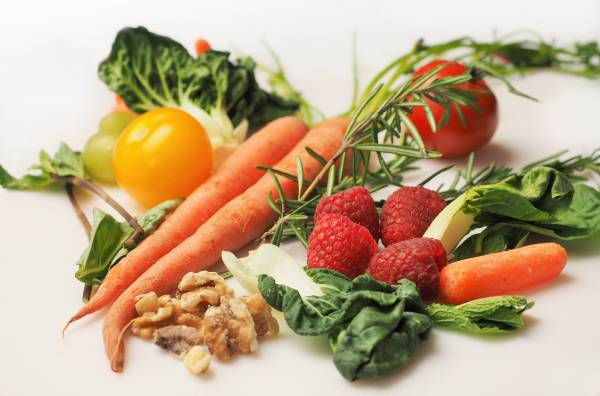
Hair fall, exfoliate nails, circles under the eyes, persistent unexplained fatigue and irritability – all symptoms of beriberi.
Seasonal climate change and the transition to the winter adversely affect our body. Therefore it is very important to saturate it with vitamins. Let’s see, where to take them.
The myth about B12
A lack of vitamin B12 not just a vegetarian problem, according to the book “vegetarian diet” (published by MYTH) Many meat eaters are also faced with its low content in the body. The fact that it is formed not in plants or animals, as we see it, and in the ground by means of microorganisms. Yes, some types of meat contains vitamin B12, but only because the animal, which became the source of this meat, eat plants covered with earth. Many products, such as cereals and soy milk, is also fortified with B12.
GDe rest ofe vitamins?
As a rule, the richest source of these vitamins and minerals and plant foods. Below you will find a list of products with the highest percentage of the daily value per serving of these vitamins and minerals. Some of them exceed the daily rate four or more times. For example, a serving of cabbage contains 1327,6% of vitamin K. And vitamin E (61,5%) in sunflower seeds seem insignificant, although they are its richest source. May surprise you, but oranges are not the richest source of vitamin C. So if your friend is sick, bring him a sweet pepper or papaya.
SEE ALSO
- What autumn vegetables saturate the body with vitamins for the whole year
Define the unit of measurement. Per serving: 2 teaspoons of spices and herbs, 1 fruit, 1 Cup with a volume of 240 ml cooked greens or raw vegetables.
- Vitamin A
Sweet potatoes (438,1%), carrots (407,6%), spinach (377,3%), cabbage Kale (354,1%), Kale (308,3%), turnip greens (219,6%), chard (it is a subspecies of beet, 214,3%), pumpkin (214,3%), leaf mustard (177%), Romaine lettuce (of 163, 7%).
- Vitamin C
Papaya (313,1%), sweet pepper (195,8%), strawberry (141,1%), broccoli (135.2 per cent), pineapple (131,4%), Brussels sprouts (126,6%), kiwi (120%), oranges (116,1%), melon (97,8%), cabbage Kale (88,8%)
- Vitamin K
Cabbage Kale (1327,6%), spinach (1110,6%), Kale (1045%), chard (715,9%), leaves
- Vitamin B6
Potato (27%), sunflower seeds (23,5%), spinach (22%), bananas (21.5 percent), avocado (19%), sweet pepper (13,5%), turnip (13%), pumpkin (12.5%), shiitake mushrooms (12,5%), Basil (7,7%), garlic (7,4%), Cayenne pepper (to 7.1%), cauliflower (6,7%), leaf mustard (6%).
- Vitamin E
Sunflower seeds (61,5%), almonds (44.8%), spinach (18,7%), chard (16,5%), turnip greens (13.5 per cent), papaya (11%), leaf mustard (8,4%), Kale (8,3%), asparagus (7,5%), sweet pepper (7,2%), cabbage Kale (5,6%), raspberries (5,4%), Cayenne pepper (5,3%), tomatoes (4.9 per cent).
- Iron
Soybeans (49,1%), lentils (36,6%), spinach (35,7%), tofu (33,7%), sesame seeds (29,1%), chickpeas (26,3%), Lima beans (24,9%), olives (24.6 per cent), Turkish beans (23,8%), Swiss chard (22%), thyme (19,2%), asparagus (15,9%), cumin (15.5 per cent).
- Calcium
Tofu (39,6%), sesame seeds (35,1%), Kale (26,6%), spinach (24,4%), turnip greens (19,7%), molasses (11.8 percent), Swiss chard (10,1%), cabbage Kale (9,36%), Basil (5,9%), oregano (5,7%), thyme (5,3%), cinnamon (5,2%) (products of animal origin have comparable values).

Photo: pixabay.com
- Vitamin D
In the book “the Blue zones” refers to the fact that vitamin D is an important ingredient in the recipe of longevity. it produces our skin under the sunlight. The lack of this vitamin increases the risk of a huge number of various diseases, including cancer, diabetes and multiple sclerosis. Heart problems, brittle bones, muscle atrophy — also the consequences of lack of vitamin D.
The national institutes of health recommend you stay in the sun for 10-15 minutes twice a week. What do we, the residents of the cities where the sun is never more than six months? To compensate for the lack of vitamin D helping us dairy products, potatoes, parsley, sunflower seeds, nuts, mushrooms and oatmeal.
Set vitamineKS
Here is a quote from the book “the Blue zones”: “In most cases, to meet the daily needs of vitamins enough to eat 6-9 servings of fruits and vegetables a day. Few people follow this advice. And why not provide your body cheap and affordable multivitamin?”. Usually vitamin complexes, which have passed all the necessary tests, clinical studies and certifications are quite expensive. Much nicer to cook a variety of dishes, even with meat, but with lots of vegetables.







